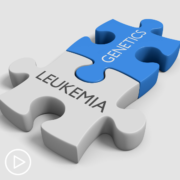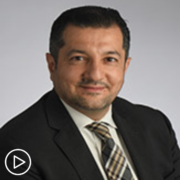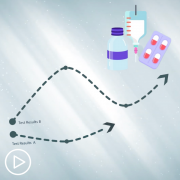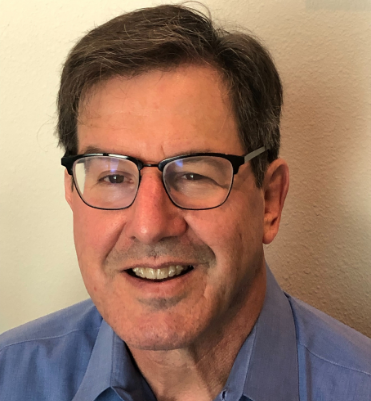Expert Advice for Navigating Myeloma Treatment and Care Decisions from Patient Empowerment Network on Vimeo.
Myeloma experts Dr. Irene Ghobrial, Dr. Omar Nadeem, and Dr. Betsy O’Donnell, review essential testing that may impact the prognosis, care, and treatment options for patients with myeloma. The experts also discuss additional factors that are taken into consideration when choosing a therapy and share updates on new and developing myeloma research.
Dr. Irene Ghobrial is Director of the Clinical Investigator Research Program at Dana-Farber Cancer Institute and Professor of Medicine at Harvard Medical School. Learn more about Dr. Ghobrial.
Dr. Omar Nadeem is the Clinical Director of the Myeloma Immune Effector Cell Therapy Program and Associate Director of the Multiple Myeloma Clinical Research Program at the Dana-Farber Cancer Institute. Learn more about Dr. Nadeem.
Dr. Betsy O’Donnell is Assistant Professor of Medicine at the Dana-Farber Cancer Institute specializing in Plasma Cell Disorders.
See More From INSIST! Myeloma
Download Resource Guide
Related Programs:
Transcript:
Katherine Banwell: Hello and welcome. I’m Katherine Banwell, your host for today’s program. Today we’re going to hear perspectives from three myeloma experts on how to access personalized care for your myeloma. Before we get into the discussion, please remember that this program is not a substitute for seeking medical advice. Please refer to your healthcare team about what might be best for you.
Well, let’s meet today’s guests. I’ll start with Dr. Irene Ghobrial. Dr. Ghobrial, welcome. Would you please introduce yourself?
Dr. Irene Ghobrial:
Absolutely, and thank you for having us. My name is Irene Ghobrial. I am a professor of medicine at Dana-Farber Cancer Institute in Boston.
Katherine Banwell:
Thank you. Also with us today is Dr. Omar Nadeem. Thank you for being with us. Would you introduce yourself?
Dr. Omar Nadeem:
Hi, everyone. Thank you for having me. My name is Omar Nadeem. I’m an instructor in medicine at Harvard Medical School and I work with the faculty at Dana-Farber myeloma program.
Katherine Banwell:
Okay, lovely, thank you. And last but not least is Dr. Betsy O’Donnell. Thank you for joining us today. Would you introduce yourself to the audience?
Dr. Betsy O’Donnell:
Sure, and thank you for having us this morning. My name is Betsy O’Donnell. I’m an assistant professor of medicine at the Dana-Farber Cancer Institute specializing in plasma cell disorders.
Katherine Banwell:
All right. Thank you to all of you for taking the time out of your schedule to join us today. Before we delve into our discussion, let’s start with understanding the types of myeloma. Dr. Ghobrial, what is MGUS?
Dr. Irene Ghobrial:
So MGUS, or monoclonal gammopathy of undetermined significance, is a precursor or the stage before myeloma happens, and it’s actually a very common disease or entity in many, many of us as we get older. In fact, maybe 5 percent of the population over the age of 50 would have this early MGUS.
It doesn’t mean that it’s cancer. It’s a precursor to cancer, and we can talk more about it as we go on.
Katherine Banwell:
All right. Is it the same as smoldering myeloma, or is that something different?
Dr. Irene Ghobrial:
It’s not. It’s an earlier stage than smoldering myeloma, and it’s hard to actually make the right definitions. But currently what we say is if you have more than 10 percent cancer cells or plasma cells in your bone marrow, then it’s smoldering myeloma. And by the name, smoldering, it’s almost myeloma. It’s ready to go on fire, but it’s not there yet.
MGUS is before that, and the difference is that the chance of progression from MGUS to myeloma is only 1 percent per year, so many, many people will never progress to myeloma. While smoldering myeloma, just because there are more cancer cells in the bone marrow, has a higher chance of progressing, which is 10 percent per year. And in some people, a very high chance of progression of 50 percent in two years.
And we want to make sure that we catch those cases early and not wait for myeloma to happen.
Katherine Banwell:
How would you define myeloma?
Dr. Irene Ghobrial:
So, myeloma is currently defined as the same thing. The number of plasma cells in the bone marrow could be above 10 percent or more, or you have a protein in the blood. But the problem is that you’ve already had problems. You’ve had symptoms of end organ damage, so we have either high calcium, bone lesions, or bone fractures, anemia, kidney failure.
And then now or more recently, we added a few more things to tell us these people are going to really develop myeloma soon. So, it used to be part of smoldering myeloma, now it’s part of the definition of myeloma, so that we can treat patients earlier, which is if your light chain level is very high, above 100 for a ratio, or if you have multiple lesions by something called an MRI or a PET CT scan instead of the traditional X-rays, or if your bone marrow has a lot of the plasma cells, more than 60 percent.
And these were new definitions to make sure we don’t wait too much until people have an organ damage or symptoms and then we treat them. And you’ll hear from us that we think we should be treating people even earlier than that.
Katherine Banwell:
Well, thank you for that. That’s very helpful. Dr. O’Donnell, let’s move on to testing. What tests are necessary to help understand a patient’s specific disease?
Dr. Betsy O’Donnell:
Absolutely. So, testing really does depend a little bit on the stage at which your disease is found. In general, we use a very specific blood test that lets us know that there is clonal protein present. Remember, plasma cells are a type of white blood cell, and they make something called antibodies. We use a test called a serum protein electrophoresis, which is a blood test – an SPEP, we call it – that can tell us the difference between normal, healthy antibody and clone that are made from the plasma cells that we see in MGUS, smoldering, and multiple myeloma.
So, that’s a very important test, and sometimes your primary care doctor may notice that your total protein is elevated and send that test.
Or there may be other things that tip them off. Perhaps the kidneys are not where they used to be. And so that test is sent, and that’s the first tip-off that someone might have a plasma cell disorder.
Once we identify that there’s a plasma cell disorder, then that can set in place a workup, depending on the amount of clonal, monoclonal, M-protein that we see. So, sometimes that involves bone imaging. Historically that was a skeletal survey where we took lots of X-rays of your body. Now we have other tests we use. PET scans, CT scans, whole body MRIs. Sometimes it depends where you’re getting your treatment, and also it depends a little bit on your doctor’s degree of suspicion.
Bone marrow biopsies are a procedure that we sometimes do. We use a thin, hollow needle to take out just a little piece of bone, about the size of an inchworm, and take some fluid with it. There’s actually fluid inside the bone marrow.
And that can tell us, just as Dr. Ghobrial was defining the spectrum of plasma cell disorders, based on the percent of plasma cells, that can tell us where somebody belongs, which group they might belong in. So, we can use all of these tests to help give us a good sense of how much disease someone has and where in the spectrum or continuum a person is – MGUS, smoldering, or multiple myeloma.
Katherine Banwell: Okay, great. Thank you. I’m assuming these tests can help with understanding the stage of a patient’s myeloma. So, Dr. Nadeem, how is myeloma staged?
Dr. Omar Nadeem: Yes. So, myeloma is staged very differently than traditional cancers. Because this is a blood disease, we don’t really think about it like we may in other solid tumor cancers, where if it’s spread to multiple locations it’s four, etcetera. That doesn’t apply to multiple myeloma. It’s actually staged out of three stages, and uses your blood work for the most part, some blood tests, to help identify which stage you are. Historically, that has correlated with how you may do.
However, now we are learning that it’s far more to this story than just the bloodwork. So, we’re now using our bone marrow test results, particularly a test called a FISH test, which looks at the mutations that are present in examinable plasma cells, and if you have presence of some of these high-risk markers, that can actually either upstage you or downstage you if you don’t.
So, we’re now I think becoming a little bit smarter how we think about this disease. It’s not just based on some blood test. We’re actually looking at the biology of some of these cells and the amount in the bone marrow. A lot of times patients ask, well, if I have 50 percent, 60 percent, or 80 percent involvement of the bone marrow, that actually does not have anything to do with staging, right? So, I think it’s important to know that it’s actually a very unique staging system in multiple myeloma.
Katherine Banwell:
Okay. Dr. O’Donnell, the landscape of myeloma has changed significantly in recent years. How have advances in testing changed care from myeloma patients?
Dr. Betsy O’Donnell:
So, I mean, the landscape has changed incredibly just in terms of the treatments we have, and I think that Dr. Nadeem was talking about something really important.
In that when we look at FISH, which allows us to know the biology a little bit more, sometimes it helps us to decide kind of the risk that a patient is. We aren’t really at the point now where we do truly tailored therapies, like you see in some cancers, where we can detect specific mutations and pick drugs that align with that, but there are some that we do use. An example would be a drug called venetoclax (Venclexta), which works very well in patients who have a specific translocation, 11;14.
So, there is some degree in which we use that FISH and those cytogenetics to help define our treatments, but also really we’re just fortunate that we have new and evolving therapies. We’ve changed how we treat myeloma in the up-front setting, and then at the back end we have an exploding field of immunotherapies, CAR-T cells, bispecific antibody that we’re now using that really have tremendously benefited our patients.
Katherine Banwell:
Dr. O’Donnell, should all patients undergo in-depth testing, like cytogenetics?
Dr. Betsy O’Donnell:
Yes, so if you’re doing a bone marrow biopsy, absolutely. The question in terms of who needs bone marrow biopsies, if someone has a low risk MGUS, those patients don’t necessarily require a bone marrow biopsy. It’s an invasive procedure, it’s an uncomfortable procedure. But if we’re doing a workup for multiple myeloma or smoldering myeloma that includes a bone marrow biopsy, then absolutely.
Katherine Banwell:
Okay. Dr. Nadeem, what are you looking for with cytogenetics, and how might test results affect prognosis and treatment?
Dr. Omar Nadeem:
Yes, so as mentioned earlier, there are some mutations that are considered high risk, I will say with the caveat that we don’t fully understand every single mutation yet or have identified every single mutation yet that may be high risk or low risk.
But there are roughly five that we have identified that if a patient has one or two or several of those abnormalities, then their disease may behave a little bit more aggressively or may not respond as well to treatment.
However, I think myeloma is just very complicated, so we look at a lot of these results in the beginning, both whether they may be good or bad. But I think, ultimately, we have to see how patients do, and that by far is the most important prognostic factor, in my opinion. So, if we look at some of these tools, including staging, some of the bone marrow results and cytogenetics, and try to give some prediction in terms of what we may see from this person’s disease, but ultimately the treatments that are so effective now really dictate the course for the majority of the patients.
Katherine Banwell:
Are there specific tests that patients should ask for that could impact their care decisions?
Dr. Omar Nadeem:
Yes, I think it depends on where they are in their disease state. So, if we’re looking at whether a patient has a precursor or plasma cell disorder or multiple myeloma, then they need all the testing to help us figure that out.
So, that includes a bone marrow biopsy, the FISH testing as we just talked about. Advanced imaging like a PET scan or an MRI is now critical to identify patients that may have multiple myeloma versus those that have a precursor condition. So, we used to count on X-rays, as Dr. O’Donnell mentioned, but now really we do prefer one of those advanced imaging techniques for patients to undergo so that we can know.
So, I think if they have basically those tests completed, that gives us most of the information that we need.
Katherine Banwell:
Okay. Thank you for that. Let’s go back to asymptomatic myeloma for a moment. Dr. Ghobrial, how are people with MGUS monitored?
Dr. Irene Ghobrial:
Yes, so how do we even diagnose them, right? It’s a big question because it’s incidentally found. Someone will go to their primary care doctor and have a little bit of a high protein or slight anemia, and it may not be related, and then their doctor will check for serum protein electrophoresis, and that’s pure luck. We want to take away luck from this equation. We want to take away chance from this equation.
And we want to start screening people who are at risk, and we are doing that with the PROMISE study.
It’s online available to everyone nationwide, international now, where you can sign up on promisestudy.org and try to ask the question that we do for you research level, the serum protein electrophoresis, and a new test called mass spectrometry that is much more sensitive than SPEP to find it.
Now, once we find MGUS, we want to know what is my own personal risk of progressing to myeloma? Because I could be 30 years old with MGUS, and likely I will progress to myeloma in the next 10 years, 20 years, and by the time I’m age 60, I would have been diagnosed with myeloma. Just a true case in many, many people. If people are diagnosed today with myeloma, they are going to their doctor because they had back pain or anemia, and they are diagnosed with myeloma. In almost all of the cases, they would have had MGUS and smoldering, but they didn’t know about it three years ago, four years ago because they never got tested
for it.
Katherine Banwell:
Right.
Dr. Irene Ghobrial:
So, we want to change that completely and become proactive rather than being reactive and waiting for symptoms to happen. Once you have MGUS or smoldering, because we don’t know, we start looking for all of the things to help us identify your risk of progression. So, we look at the height of your M-spike. Is it small or big? And then we in many cases say okay, maybe you need a bone marrow biopsy if your M-spike is a little bit on the higher side because we don’t want to miss smoldering myeloma, which will change the prognosis.
And then we start looking at do you have anemia? Do you have kidney failure? Do you have any of the other things that may predict that you may be actually doing into myeloma?
We also look at it more as a movie rather than as a snapshot, rather than a picture. If your M-spike is changing or your light chain is changing every three months, every six months, that’s an indicator that the cancer cells are doing something. They’re working in there and growing, and that’s why they’re increasing the M-spike and the light chain.
And that evolving number is actually a very big predictor of telling us that there is a risk of progressing. Those are all clinical markers that we can do. When we look at the FISH, which we talked about, we can tell the certain markers are chromosomal changes that tell you that those cancer cells want to grow a little bit faster. So, 1q abnormality, 4;14, 14;16, 17p, all of those have been shown that when you have them, the cancer cells are not just sitting around and doing nothing. They’re actually starting to grow, and we want to catch them and understand what is the biology of the disease rather than just how many cancer cells you have.
We do a lot of research level, and potentially now we’re going to give them back to the patients as clinical level, where we can give you more information about that prediction of your risk of progression. One of my colleagues calls it predicting the hurricane. We know that the hurricane will happen, and it’s a question of how precise could you be? We’re the Weather Channel men here.
And we could be very precise and tell you it’s going to hit Miami at 2:00 in the afternoon tomorrow, and you could be prepared for it and get out of there. Or, you could be completely unprepared because we were not very accurate in our prediction and tell you it may hit the whole East Coast in the next two weeks. That’s not accuracy. So, we want to be more accurate in our prediction of myeloma because one person will never develop myeloma and can go have fun and enjoy life and not be worried and anxious about their risk, and another person we might say let’s watch you more carefully, or let’s think of interception preventing things.
So, we do things called next-generation sequencing, taking all of those small numbers of cancer cells, even as little as single cells, and we can do whole genome sequencing and give back that information.
We look at the immune cells and give back that information. We can do mass spectrometry. And with Betsy and Omar, we’re doing more and more tests so that when we have this prediction model, circulating tumor cells and so on, we can be more accurate in giving you that prediction.
And help you make the next decision of are we watching carefully, are we preventing and intervening with behavior modification with other things? Are we intervening with therapy to intercept the disease?
Katherine Banwell:
When are more in-depth tests necessary?
Dr. Irene Ghobrial:
It depends, of course, on everything. I would probably say for every patient, it is a unique discussion. Some patients will tell me, “Let’s watch again in three to six months, and then I will do more testing,” and some patients want to know everything immediately. And we have those discussions with every patient, and we tailor our therapy as well as our diagnostics workup with every patient, depending on how much they want to know, how much their risk is, and how much they want to be involved in that discussion of how much to prevent myeloma.
Katherine Banwell:
All right. Dr. Nadeem, as we begin our treatment discussion, would you define personalized medicine as it relates to myeloma care?
Dr. Omar Nadeem:
Yes. I think we’re getting better and better at really having a personalized treatment plan for each individual patient with multiple myeloma. I think Dr. O’Donnell defined before, we are identifying some of the markers where we have targeted therapy for, and we hope with time we’ll discover more and more targets that can truly lead to personalized medicine for individual patients.
Right now, though, we have a lot of approved therapies for multiple myeloma, and that list is getting longer and longer basically every month, it seems, nowadays. So, when we have so many tools in our toolkit, we then have to figure out, well, which strategy works for which patient? And the fact that we have effective therapies, we’re able to tailor how much of one particular therapy a patient may benefit from. So, some of the decisions that come into play is which medication should I combine for this patient which will lead to obviously disease eradication?
And then also, how much do I need to intensify that treatment? Do we need to think about doing a stem cell transplant or not? Yes or no?
There’s lot of pros and cons, right? So, it’s a very personalized decision that we have, looking at the disease factors, but also a lot of personal factors because transplant interrupts life, and then we have to make sure that that fits with that particular patient’s lifestyle.
And then we talk about maintenance therapy. You know, that’s the therapy that is designed to kind of keep the disease away usually for many, many years for the majority of patients.
But what does that look like, right? Does that include just pills? Is it going to be shots plus pills? Is it going to be a combination, etcetera? So, we have all the discussions at each phase of myeloma, and we discuss with them about what the pros and cons are and how that may fit into their particular lifestyle.
Katherine Banwell:
Dr. O’Donnell, what factors do you consider when choosing a treatment approach?
Dr. Betsy O’Donnell:
So, I think you’ve heard from all of us that we really try to have an individualized approach. When we’re talking about multiple myeloma, one of the main factors that I think about is really kind of the overall wellness of the patient. Historically we had different categories of transplant eligible, transplant ineligible.
And so that can influence some of the decisions. Really it comes down to what is the person’s performance does? How well are they doing in their day-to-day life? And that really can dictate the intensity of the therapy. We know that age is just a number, it really is, so there are factors beyond that. What other medical problems do people have? What are the specifics of how well their kidneys are working?
And so the biggest thing that we can work with is the dose. In fact, we’ve had work that shows that using lower doses from the get-go in older patients allows almost identical outcomes, but really gives patients a tailored dose to where they are at that juncture in their life.
And so remember, myeloma is much more like a marathon, and so you have to set out at a pace that can be sustained. We treat people continuously. There’s an induction phase where we use a multiple drug combination, but beyond that, as Dr. Nadeem just said, they go on to maintenance, and that maintenance is indefinite. And so you have to set out at a pace or at a dose that you can sustain.
Different medications have different toxicity profiles, so if someone had, let’s say, cardiac or heart issues, we might steer away from some medications that may exacerbate those. So, every decision is individualized. It’s based on who the patient is, where they are in their life, what other medical problems they have, and what we think they will do best with over time, not just in a short timeframe.
Katherine Banwell:
Well, as we’ve been discussing, treatment choices vary for individual patients. Dr. Nadeem, what types of myeloma treatment classes are currently available?
Dr. Omar Nadeem:
Yes. So, we started over three decades ago plus with just having basically steroid medications and some older chemotherapy drugs that weren’t very targeted at all, and that was basically all we had up until about a little over 20 years ago, where immunomodulatory drugs were first discovered to be effective in multiple myeloma, and that included thalidomide and now a commonly used agent called lenalidomide, or Revlimid.
After that, we had a next class of medications approved called proteasome inhibitors that work differently than the immunomodulatory drugs, and then we combined all of these therapies about a decade plus ago and showed that that was better than anything else that we were doing before that. So, combining the steroids with the immunomodulatory drugs and proteasome inhibitors became the standard of care.
And then we had the next class of drugs approved in 2015 called monoclonal antibodies, and that’s the first time we have monoclonal antibodies approved for myeloma, and it first started in patients that had relapse myeloma, and then they made it all the way up to front line therapy with a drug in particular called daratumumab.
And now what we’re going is entering an era of combining all four of these therapies, just like we did 10 years ago with three drugs, and showing that combining four drugs is actually better than three. And the important thing there is that it’s not necessarily adding cumulative toxicity. These are targeted therapies; they all work differently but they all work really well together. So, now combining these agents has allowed us to really treat the disease effectively and allow for patients to tolerate the therapies.
And then over the last couple of years, we’ve now entered kind of the next renaissance in myeloma where you have immunotherapies, and these are sort of true immunotherapies, in some cases taking the patient’s own T cells and then genetically modifying them to recognize myeloma cells and putting them back into patients. This is called CAR T-cell therapy, and that’s now approved for patients with multiple myeloma.
And that again, just like the previous drug, sits in patients that have – you know, at a space where patients have had multiple relapses. But we’re now studying that earlier and earlier, and that along with another class of drugs called bispecific antibodies that also use your T cells via a different mechanism. A lot of exciting things going on, and we keep adding to the available agents for this disease.
Katherine Banwell:
As you say, so many exciting advances. Where do clinical trials fit into a patient’s treatment plan?
Dr. Omar Nadeem:
Yes. So, clinical trials as a term, a lot of times patients have a lot of questions about what that means. There’s a lot of misconceptions, I would say.
Sometimes patients think they will get either a placebo and they won’t get the adequate treatment, or that they may not get the right treatment, right, because they’re taking a chance going on a clinical trial. It’s actually the opposite. So, all the trials are really designed to improve upon what we already know works in a particular disease, right? So, when we think about trials let’s say in relapsed myeloma, where the patient has already had some of the approved therapies, we’re looking at the most promising new therapies that have shown efficacy either in the lab or first in human studies and then moving them through the different phases and studying them in more and more patients.
And that’s how all these drugs get started, right? So, they all get started at that point and then make their way to earlier lines of therapy.
Then you’re trying to answer different questions as part of clinical trials. So, which one of these therapies can I combine, for example. Which ones can I omit, which ones – so, they’re all sort of getting the standard therapy and getting something either added on top of it or removed, depending on what the question that we’re asking.
And then in the world that we currently live in with precursor plasma cell disorders, as Dr. Ghobrial mentioned, we have lots of patients that are at high risk of developing multiple myeloma in their lifetime, and that could be in a few years to a decade. And a lot of these therapies are so effective, and we’re now trying to really study some of these rationally in that patient population, so that’s a very different clinical trial, for example, than what I described earlier.
So, it really depends on what you’re trying to achieve and where you are in the phase of your disease.
Katherine Banwell:
This next question is open to all of you. Are there therapies in development that are showing promise for patients with myeloma? Dr. O’Donnell, let’s start with you.
Dr. Betsy O’Donnell:
Yes. So, I think we are so fortunate in multiple myeloma to have so much interest in our disease and so many great drugs developed. So, as Dr. Nadeem was discussing, CAR-T cells are an immunotherapy, the ones that are approved now, we actually are fortunate to have two CAR-T cells approved, target something very specific called B-cell maturation antigen.
We’re now seeing the next generation where we’re looking at other targets on the same cancer cell, that plasma cell, so those are evolving.
Same thing is true in the bispecific antibody space. Again, those target BCMA now, but we have newer bispecifics who look at alternate targets, and really what this does is it gives us different ways of approaching the cancer cell, particularly as you relapse through disease.
Katherine Banwell:
Anybody else? Dr. Ghobrial, Dr. Nadeem? Anything to add about therapies available?
Dr. Irene Ghobrial:
I would probably say we’re also getting into targeted therapies and more of personalized, so if you have an 11;14 translocation, venetoclax would be an amazing drug for that. And the more we can say my own personal myeloma, what’s the best treatment for me, that’s how we’re trying to do it. So, it may not be exactly precision medicine, but we’re getting closer and closer to precision medicine of my myeloma, my specific drugs. And even if people have a 17p deletion, then we would say let’s think of that immunotherapy.
It is truly a renaissance for us, and we’re starting to get into trispecifics, into off-the-shelf CAR-T, into so many new things. Into two different antigens that are expressed for the CAR-Ts. I mean, we are really beginning the era of immunotherapy, and we’re excited to see how much we can go into that because it will completely change myeloma, and hopefully we will cure many patients. We think we have already amazing drugs. It’s a matter of when to use them and who is the right person for this right drug.
Katherine Banwell:
Exactly, yes. Dr. Nadeem, many patients are on maintenance therapy following active treatment. So, how is a patient on maintenance therapy monitored?
Dr. Omar Nadeem:
Yes, so, majority of the time just with bloodwork. We don’t necessarily need to do a lot of bone marrow biopsies and PET scans for a majority of patients that are on maintenance therapy unless we’re either worried about their blood markers or some symptoms. Generally speaking, any time – it depends on what maintenance therapy they’re on, of course. If they’re just on lenalidomide, which is the most commonly used maintenance therapy, a lot of times we check in with them every one to three months.
Depending on how their disease status is and how they’ve been doing and whether there’s any side effects that we need to worry about. So, they still have to see their doctors, still have to get the bloodwork. Usually you can get away with having it done no more than once a month or so, unless they are on other medications along with Revlimid, where we then have to check in with them a little bit more frequently.
And some of that changes, so patients can be on maintenance therapy for five plus years, and we get a very good sense of how they are doing and kind of how their disease is doing, and we can kind of be a moving target in terms of the frequency of the follow-ups.
Katherine Banwell:
We know that relapse can happen. Dr. Ghobrial, how common is relapsed or refractory disease?
Dr. Irene Ghobrial:
Yes, and fortunately, we do have amazing remissions. We have very long remissions. Many people are living 10 years, 15 years and longer, which as Dr. Nadeem said, was not something we knew about years ago. I trained 20 years ago as a fellow, and myeloma was a survival of three to five years.
We’ve come a long way, but we want to change that even better. We want a cure. We want to tell a patient, “You are done. You’re cured,” and we will not stop until that happens. So, when people have a progression again or relapse, then we want to consider what is the next available option. What is the best option to give them yet one more long, long remission? We are failing sometimes, and that’s because the disease is so bad, the biology of the disease is so bad, and the drugs that we’re using may not be the best drugs for that patient.
And that’s why we need to understand better the biology and pick the right drugs for the right patient up front as much as we can, and also think about earlier treatment. We were just saying we probably have amazing drugs, but we’re waiting way too long until people have almost metastatic disease, and then we treat them. Why not think of an earlier interception when the disease is less mutated, when you have less cancer cells, a better immune system, and use your best drugs then? And hopefully we will achieve cure in many of those patients.
Katherine Banwell:
What testing takes place after a relapse? Is it different than what has happened before, the testing that was done before?
Dr. Irene Ghobrial:
No, the same tests exactly. We sort of say it’s restaging. We check everything again – the bone marrow biopsy, the FISH, because you may now develop a 17p that was probably there, but the very, very small number of cells that you cannot detect, and now it grows because of something called chrono selection. The drugs kill the sensitive cells, but they don’t kill the bad cells, and that’s how we can get all of those changes and mutations.
Katherine Banwell:
Okay. Dr. O’Donnell, is the process for choosing treatment different for a relapsed or refractory patient?
Dr. Irene Ghobrial:
So, that’s a great question. Yes, it can be. I mean, again, it always depends on how the person is doing at that time. It also depends, there are certain drugs that may not be approved in the front lines, something like venetoclax. If a person has a specific translocation, this 11;14, that’s something that we would like it in a second-line setting, for example.
Usually one of the big questions people ask is if you’re on a specific class of drugs, should you change classes? So, this example is if you’re on Revlimid, and you have evidence that your disease is progressing, should you change to a different type of drug? A proteasome inhibitor, monoclonal antibody? Should that include one of the same classes of drug, like pomalidomide (Pomalyst), which is the next generation?
So, there are a lot of different factors that we consider. The number of drugs. So, you know, as Dr. Nadeem said, historically – there’s a lot of history in myeloma therapy, and it’s been an evolution, and so now we’ve had people who were treated with the three-drug combination that are starting, after many years, to progress. So, we might choose a monoclonal antibody for those patients because it wasn’t available at the time they were diagnosed. Versus patients now, who are typically on a four-drug regimen that includes those monoclonal antibodies and all the different classes of drugs.
We’re looking at different and, if available, novel agents to put those patients on. And again, I think Dr. Nadeem made a really important point that I want to underscore, which is that very often our best therapies are available in clinical trials. And so when and if there is the opportunity to be on a clinical trial, you may be then able to get something that would not otherwise be available to you. So, I encourage people to always have an open mind to being on a clinical trial at any stage in their disease treatment.
Katherine Banwell:
What therapies are available for relapse or refractory disease? Are they different than other therapies?
Dr. Betsy O’Donnell:
You know, so that’s a great question. So, yes and no. I highlighted one example that might be a little bit different, but in general, we’re very fortunate that we have multiple classes of drugs, meaning we have different drugs that work differently to kill your myeloma cells. And as Dr. Nadeem said earlier, we use those in combinations to increase the effectiveness of those medicines. Within each class we have a variety of drugs.
You used the example of immunomodulators, and show that we have three different of those type of drugs. We have two different proteasome inhibitors. Beyond that, we have other classes of drugs that were mentioned. We have monoclonal antibodies, immunotherapies.
And so very often we make, it’s almost like a mix where we pick what we think is going to be most effective, sometimes based on cytogenetics. The biology. Sometimes based on patient selection. What are their other medical problems, what are their current issues? And we pick the combination that we feel is going to be most effective from the different classes of drugs that we have together, usually trying to use multiple drugs in combination.
Katherine Banwell:
Well, what newer therapies are available or in development for refractory and relapse disease?
Dr. Betsy O’Donnell:
So, I think that the greatest interest that I think we’re all most excited about is the immunotherapy space, and I think we’ve seen – for myeloma, we see that this is a relapsing and remitting disease.
And what’s been so exciting about CAR-T cells and the bispecific antibodies is that in patients who have had, on average, five relapses, we’re seeing tremendous results. So, complete remissions or very good partial remissions that last. In fact, can last up to two years, on average, with one of our CAR T-cell products.
So, this is really exciting, especially when you compare to what historically has been out there for patients who have had that many relapses. And just as Dr. Nadeem said, the way that drugs enter, they enter from the relapse refractory setting, ethically that’s what makes the most sense, and they march their way forward. And so that process is happening right now as we speak, and I think like Dr. Ghobrial talked about, is the importance in early disease of thinking about using these really exciting therapies in patients who have lower burdens of disease with a goal of cure.
And so I think all of us on this call are committed to one thing, and that is curing multiple myeloma, and even the precursors that lead up to it so that patients never have to go through the process of years and years of therapy. And so I think we’re very excited about what immunotherapy might be able to offer as we move forward in myeloma treatment.
Katherine Banwell:
Yes. Thank you for that, Dr. O’Donnell. Let’s take a few questions that we received from audience members prior to the program. Colin writes, “How is it determined as to which patients might be the best candidates for clinical trial CAR T-cell treatment?” Dr. Nadeem, we talked a few moments ago about CAR T-cell treatment. Would you like to answer this question?
Dr. Omar Nadeem:
Sure, I’d be happy to. So, CAR T-cell therapy is already approved. It’s FDA-approved for patients that have had four or more prior lines of myeloma therapy. So, when we think about a patient coming to us for that particular treatment that have relapsed myeloma, we’re always looking to see how much of the previous therapy they had.
Whether they meet the indication, the labeled indication for that particular product. And then now, as we’ve discussed today, we’re studying this CAR T-cell therapy in various different phases of myeloma. Earlier lines of therapy, even thinking about studying it in high-risk smoldering myeloma, right? And then kind of looking about how we can best study this therapy in so many different phases.
So, it all depends on where a patient is in their disease state, and then we kind of look to see whether a commercial approved CAR-T product makes sense for them, or we think about one of our several relapse CAR T-cell trials that are looking at BCMA target, which is what the approved one is, but also looking at newer targets like GPRC5D that we’ve brought up before.
So, it encompasses a lot of different things, that question, but I think in terms of the candidacy of the patient itself, we do know that these CAR T-cell therapies have some toxicity, so we have to then weigh in terms of what medical problems they have whether they’ll be able to tolerate what the majority of patients with CAR T-cell therapy get, which is this syndrome called cytokine release syndrome, where patients will get a fever.
And in some cases have changes in their blood pressure or oxygen levels. We have to make sure that the patient’s body can handle that. I will say we’ve gotten better and better at managing a lot of toxicities as it comes to CAR T-cell therapy. When this was first approved, it was all pretty new, but now what we’re learning is if patients are developing a fever, which the majority do, we’re intervening earlier and earlier to prevent them from getting sicker.
So, these are things we’ve learned now, and the majority of patients get through CAR T-cell therapy toxicity period much better than they did when it was first approved.
Katherine Banwell:
Okay, thank you for that.
Dr. O’Donnell, Alex wrote in with this question. “What is the difference between a complete response, VGPR, and PR as it applies to prognosis and maintenance after an autologous stem cell transplant?” And before you answer the question, would you define VGPR and PR for us?
Dr. Betsy O’Donnell:
Sure. So, we have different criteria that help us understand how well a drug is working, and they’re uniformly used across clinical trials so that we’re all speaking the same language. And so we talk about a PR, a VGPR, and a CR. So, a CR is a complete response, which is 100 percent of that monoclonal protein that we initially detected is gone. We can’t measure it. Or if you have an elevated light chain, which is another piece of the protein, that has gone back down to normal.
Taking that a step further, astringent CR is if we do a bone marrow biopsy and we can’t find any cancer plasma cells in there. A VGPR is where we see a 90 percent reduction in the amount of protein we can measure, and a PR is anything over – a partial response is anything over 50 percent.
So, that’s a language we speak really just so that when we’re interpreting clinical trials, we all are using the same criteria.
And so these are different terms that classify it. If the example that you gave, someone’s had a transplant, what would typically happen 100 days after that transplant is a patient would restart maintenance therapy. The classic maintenance is just lenalidomide, which is the pill that they were probably taking before that. And there’s a lot of controversy now but no good answers about changing therapy after a transplant, if you haven’t received a deep response.
What we do know is that after a transplant, when someone goes on lenalidomide maintenance, they continue to respond. So, the greatest depth of response is not necessarily achieved in the induction phase or right immediately after transplant, but over time on maintenance.
There’s another tool that we’re now using and incorporating, both in terms of how we assess treatment but also potentially in how we modify treatment, which is something called minimal residual disease, MRD, which goes a step beyond. When people have astringent CR, a CR, looking for really just traces of the disease on a molecular level.
And all of those help us understand how well the patient has responded and how long that remission might last, but they’re not definitive in terms of how we should adjust treatment based on those right now.
Katherine Banwell:
Okay. Thank you for that. Dr. Ghobrial, this is a question we’ve received from Carlene. “Many prominent doctors claim the COVID vaccines suppress the immune system. How can boosters be justified in an already immune deficient myeloma patient?
Dr. Irene Ghobrial:
Yes, so we think that protecting yourself and preventing COVID infections is so essential and so important.
Especially in a patient with myeloma and especially when you’re receiving therapy: daratumumab, bispecifics, CAR-T. We want to make sure everyone is protected from COVID infections, and they are real. They are serious, and they cause death in our patients. So, every step, not only getting the vaccine but also sometimes we give tixagevimab co-packaged with cilgavimab (Evusheld) to protect our patients and protect further problems and reinfection.
Katherine Banwell:
Remind us, what that is, the Evusheld?
Dr. Irene Ghobrial:
Oh. It’s an antibody to help us prevent the COVID infection, so as a prevention method rather than as a treatment method.
The other thing that we think of is the immune system is already altered in myeloma. It’s even altered or changed even as early as MGUS and smoldering myeloma. So, when we’re walking around and thinking, “Oh, I have only a benign design of MGUS,” that’s not true. The immune system has already started to change as early as MGUS, and in many of us as we get older.
So, we have to be more protective and we have to be more careful with our patients. But as we get to even myeloma, before we even treat it, before we use the drugs that kill plasma cells, good and bad plasma cells, which secrete antibodies that fight infections, we are already at risk for COVID infections.
And then our drugs, unfortunately, don’t only kill the malignant or the bad plasma cells, they also have a small side effect of killing also your normal plasma cells, and these are the ones that make antibodies to fight infections. So, you are at risk and you have to be very protective and careful with yourself.
Katherine Banwell:
Is there any research on predicting hereditary risk of myeloma?
Dr. Irene Ghobrial:
Yes, so part of the PROMISE study is trying to understand what is the risk of developing myeloma. So, we’re recruiting people who are either African American because they have a three times higher chance of developing myeloma compared to the White population, as well as people who have a first degree family member with a plasma cell disorder.
Or even any blood cancer because now we see that CLL and lymphoma and myeloma can actually come together. And we’re now doing something called whole genome sequencing of all of the DNA that you inherit from Mom or Dad called the germ line. Basically, we try to see did you inherit the gene from Mom or Dad that increases your risk to myeloma?
Now, it’s not as high as something like BRCA1 mutation or 2 mutation, where if you have that, you’re high, high chance of developing breast cancer or ovarian cancer and so on. We probably have several factors that need to be put together. You inherit something and then the environment adds something, and then as we get older, we get the hit.
Or you inherit something that changes your immune system, and that allows the plasma cells to start proliferating faster because they are reacting as an immune cell, and that allows the hit of myeloma to happen. And we’re working on that, and we would really encourage everyone who has a relative with myeloma, sign up on PROMISE study.
Because that’s how we can get the answer. That’s how we can say it’s not because you are an African American or you’re White. It’s not because you have a first-degree family member or not. It’s because of this gene. So, taking away race, taking away all of those factors, taking away age and trying to go back to the biology. Is it a certain gene, is it the certain immune cell that makes us go to that risk?
And then Dr. O’Donnell is really taking it to the next level. Now what is in the macro environment? So, we talked about what we inherit, but it’s like nurture and nature, right? So, nature is the genetics and then nurture, what do we eat? What do we change? Obesity, health, all of those things change our inflammation level and change our ability to basically prevent those myeloma cells from starting or from continuing to progress. And she can potentially talk about her work on microbiome, on the tiny bacteria that are in our body from what we eat. So, maybe, Betsy?
Katherine Banwell:
Okay.
Dr. Betsy O’Donnell:
Absolutely. Yes, so one of the things that particularly interests me is the effect of lifestyle on our risk of getting cancer.
And specifically within plasma cell disorders, and I think there have been other cancers, breast cancer and colon cancer, where they’re a couple steps ahead of us just in understanding the influence of things like obesity and the gut microbiome. So, the specific bacteria that are within your intestinal tract. It makes a lot of sense in colon cancer, but we think that that’s not limited to diseases like that. We actually think that these microbiomes, which are influenced by the foods that you eat, may have a relationship with your immune system. And remember, myeloma is a cancer of the immune system.
So, we’re all working together on our team here on a very scientific level to understand lifestyle influences and how they may cause or potentiate multiple myeloma. And so we’re excited to kind of bring this piece together. When you think about the spectrum of plasma cell disorders, not everybody goes on to myeloma, but a lot of people sit in these early precursor diseases, MGUS and early smoldering.
And so are there things that people can do for themselves that might influence their gut microbiome, or if it’s the amount of body fat that we have that’s very involved in cell signaling? Can we modify those things, exercise more potentially, that will decrease our body inflammation levels or alter those pathways that have been set in process that, by altering them, may decrease the risk of going on to more advanced plasma cell disorders?
Katherine Banwell:
That’s such great information. Thank you for answering that, and thank you all for your thoughtful responses to the questions.
As we close out the program, I’d like to get a comment from each of you. As I mentioned at the start of the webinar, care for myeloma patients is becoming more personalized, and we’ve been talking about that throughout the program. What are you hopeful about the future of care for myeloma patients? Dr. Ghobrial, do you want to start?
Dr. Irene Ghobrial:
I’m hopeful that we truly cure myeloma, and no one should ever develop end organ damage.
We should identify it early and treat it early, and no one should ever come in being diagnosed with multiple myeloma.
Katherine Banwell:
Okay. Dr. Nadeem?
Dr. Omar Nadeem:
Yes, I think I definitely agree with what Irene said, and really having a more thoughtful approach to each individual myeloma patient. As I mentioned earlier, we have so many available therapies. I want to be able to know exactly which patients need which path in terms of treatment, and which ones we can maybe de-escalate therapy, right? So, thinking about which patients do well and maybe can get away with not being on continuous therapy, and those that absolutely need it. Identifying them better to give them the best therapy.
Katherine Banwell:
Dr. O’Donnell, do you have anything to add?
Dr. Betsy O’Donnell:
I think we all share a common goal, which is cure, and for those who we can’t cure yet, I think really working on making the experience as good as it possibly can be and focusing on the factors that we can control and optimizing those, both for patients and their caregivers who are in this journey together with the patient.
Katherine Banwell:
Well, I’d like to extend my thanks to all of you for joining us today.
Dr. Irene Ghobrial:
Thank you.
Dr. Betsy O’Donnell:
Thank you for having us.
Katherine Banwell:
And thank you to all of our partners. To learn more about myeloma and to access tools to help you become a proactive patient, visit powerfulpatients.org. I’m Katherine Banwell. Thanks so much for joining us.

































